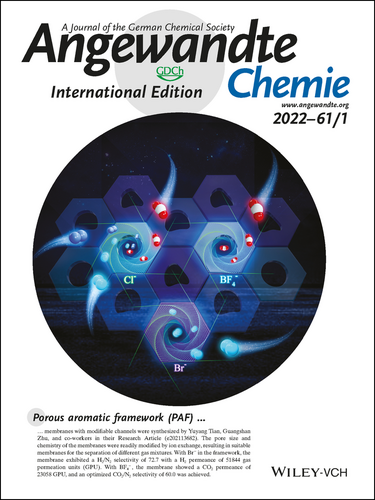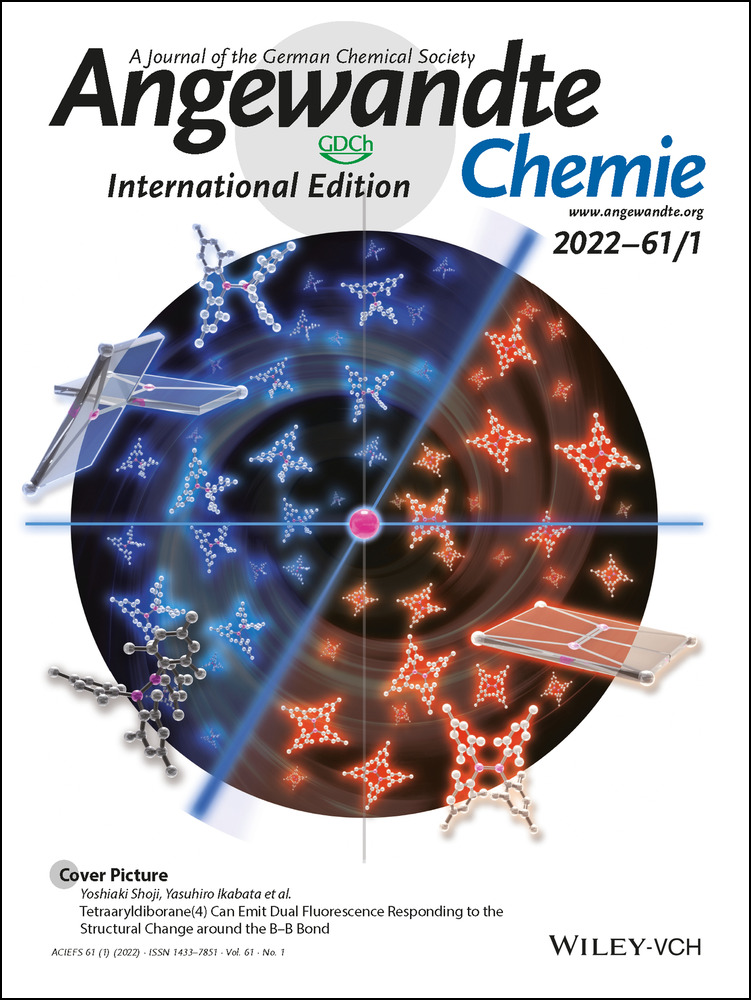Inside Cover: Continuous Porous Aromatic Framework Membranes with Modifiable Sites for Optimized Gas Separation (Angew. Chem. Int. Ed. 1/2022)
Graphical Abstract
Porous aromatic framework (PAF) membranes with modifiable channels were synthesized by Yuyang Tian, Guangshan Zhu, and co-workers in their Research Article (e202113682). The pore size and chemistry of the membranes were readily modified by ion exchange, resulting in suitable membranes for the separation of different gas mixtures. With Br− in the framework, the membrane exhibited a H2/N2 selectivity of 72.7 with a H2 permeance of 51844 gas permeation units (GPU). With BF4−, the membrane showed a CO2 permeance of 23058 GPU, and an optimized CO2/N2 selectivity of 60.0 was achieved.





